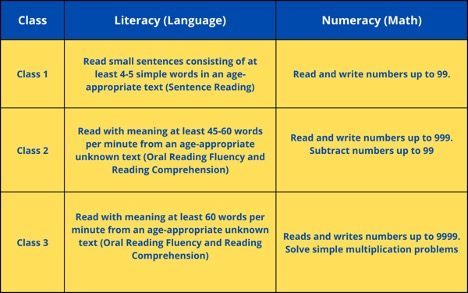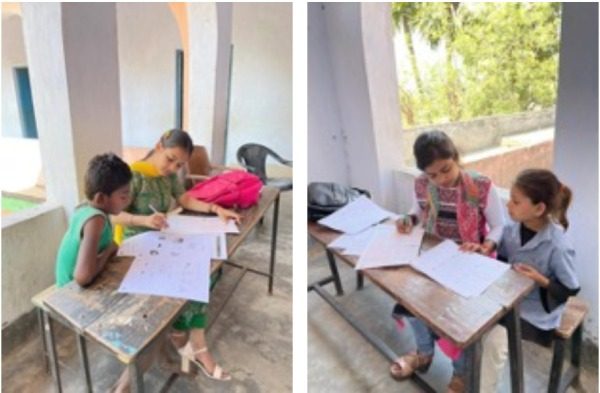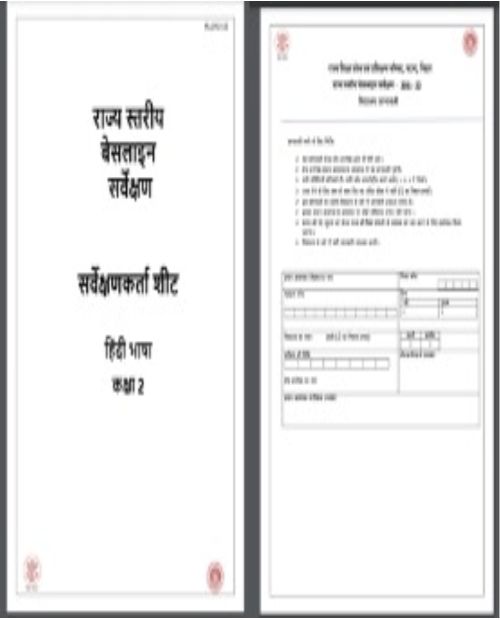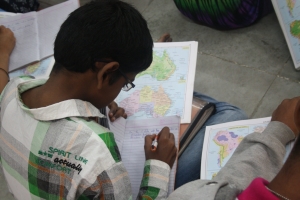Schools have reopened, children are back in schools and there is a growing sense of optimism around. This, however, does not mean that we go back to business as usual. Children have suffered enormous learning losses in the last couple of years, and we must prioritize mitigating these losses to ensure they can learn meaningfully in later years. To address this, we must first understand the extent of the learning losses.
The NIPUN (National Initiative for Proficiency in Reading with Understanding and Numeracy) Bharat, the national mission to help every child in class 3 acquire Foundational Literacy and Numeracy (FLN) skills by 2026-27, has suggested that states conduct baseline surveys to determine the learning level of the students before starting grade-specific learning tasks. The findings of this survey will also help in setting learning targets for teachers and students. To ensure mission success, NIPUN Bharat has set specific and actionable FLN ‘Lakshya’ or Learning Goals up to class 3.
Read: NIPUN Bharat Guidelines for Implementation, 2021

In line with the NIPUN Bharat guidelines, the State Council of Educational Research and Training (SCERT), Bihar, conducted a baseline study on March 8, 2022, in the state with support from Central Square Foundation (CSF). The study aims to understand the extent of learning loss due to Covid-induced school closures, the current FLN levels of children and establish a baseline for students in class 2. This article deep-dives into the study, explores some of its key components and shares learnings from the study.
Scale and Sampling
While students up to class 3 fall under the ambit of the NIPUN Bharat mission, the study covered students of class 2. This is because students who are currently in class 1 have not been to school yet while those in class 3 were assessed in the foundational learning study recently conducted by the Ministry of Education.
The Bihar baseline study was conducted at the block level, with three schools from each block. Out of the three schools, 2 were rural and 1 urban. In the case that a block did not have any urban schools, all sampled schools were in rural areas. It covered 43,000 students in 1,600 schools.

Assessment Tools and Questionnaires
The study assessed two distinct aspects. It tested the key competencies in foundational language and math, and was conducted in Hindi, which is the students’ language of learning in the state. The FLN assessment tools used in this study were designed originally by CSF with support from Educational Initiatives, and contextualized along with Bihar SCERT experts. These tools have been developed on the guidelines of Early Grade Reading Assessment (EGRA) and Early Grade Mathematics Assessment (EGMA)- open source tools, developed by RTI. A detailed discussion on tools was done with the SCERT experts, and the tools were finalized with their inputs. The tools were administered orally by assessors, one-on-one for 20-25 minutes per child since these children, who haven’t been to schools, couldn’t be expected to give a written test.
In addition to the student assessment, there were also teacher and school questionnaires, which were administered to teachers and school principals to seek information on relevant background factors. Large scale assessments usually collect background factors since they often play a critical role in analyzing the association between these contextual variables and student’s learning levels.
In addition to the student assessment, there were also teacher and school questionnaires, which were administered to teachers and school principals to seek information on relevant background factors. These included questions around teachers’ academic and professional backgrounds, classroom resources, and instructional practices as part of the teacher questionnaire. There was also a section on teaching-learning during Covid-19.
Large scale assessments usually collect background factors since they often play a critical role in analyzing the association between these contextual variables and student’s learning levels.

Assessors and Training
The assessment was administered by District Institute of Education and Training (DIET) students. They were trained by the Master Trainers, who are DIET faculty members or teacher trainees enrolled in DIET/College of Teacher Education (CTE)/ Primary Teachers Education College (PTEC). The survey was conducted by two field investigators in each school, supervised by the assigned Master Trainers with support from CSF team members.
Sensitizing the stakeholders about the objectives of the assessment was key to ensure it remains low stakes and does not add to the stress levels of the students and teachers. Master Trainers were instructed to communicate to the schools that the purpose of the assessment was only to diagnose student’s learning levels, and that the data would not be used for any other purpose or punitive measures.
Accuracy of the collected data is vital to ensure effective interventions going forward and assessors were given strict instructions to ensure that the assessment is carried in a fair and reliable manner, free from any malpractice.
Sensitizing the stakeholders about the objectives of the assessment was key to ensure it remains low stakes and does not add to the stress levels of the students and teachers. Master Trainers were instructed to communicate to the schools that the purpose of the assessment was only to diagnose student’s learning levels, and that the data would not be used for any other purpose or punitive measures.
Prior to the survey, Bihar SCERT issued a detailed guideline to align the assessors on the objective and methods of the study. The guideline outlined the purpose, sampling framework, methodology for carrying out the study and field work preparation.
Way Forward: Set Targets, Monitor Regularly and Plan Interventions
While the study is critical, it is only the first step towards addressing the learning gaps in children and improving their FLN outcomes. The data collected will be analyzed to understand the current learning levels, following which districtwise targets for students’ learning levels in literacy and numeracy would be set, and tracked through periodic assessments.
Implementation of these will largely depend on the active participation of the key stakeholders of the state. Workshops with district level functionaries such as DIETs’ Principals and faculty members, District Education Office (DEO), teachers, head teachers, parents, School Management Committee (SMC) members and other stakeholders will be held to share the findings of the survey on student learning. This will help build a common understanding of the existing FLN levels at class 2, identify priority areas for further action and work together towards implementing them.
This study is a precursor to planning and such assessments at a system as well as classroom-level will continue to play a critical role in ensuring targeted initiatives and interventions to enhance student learning.



